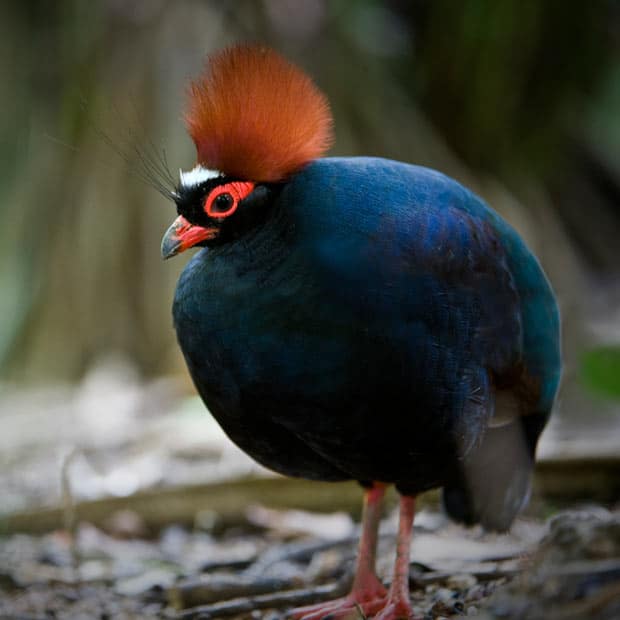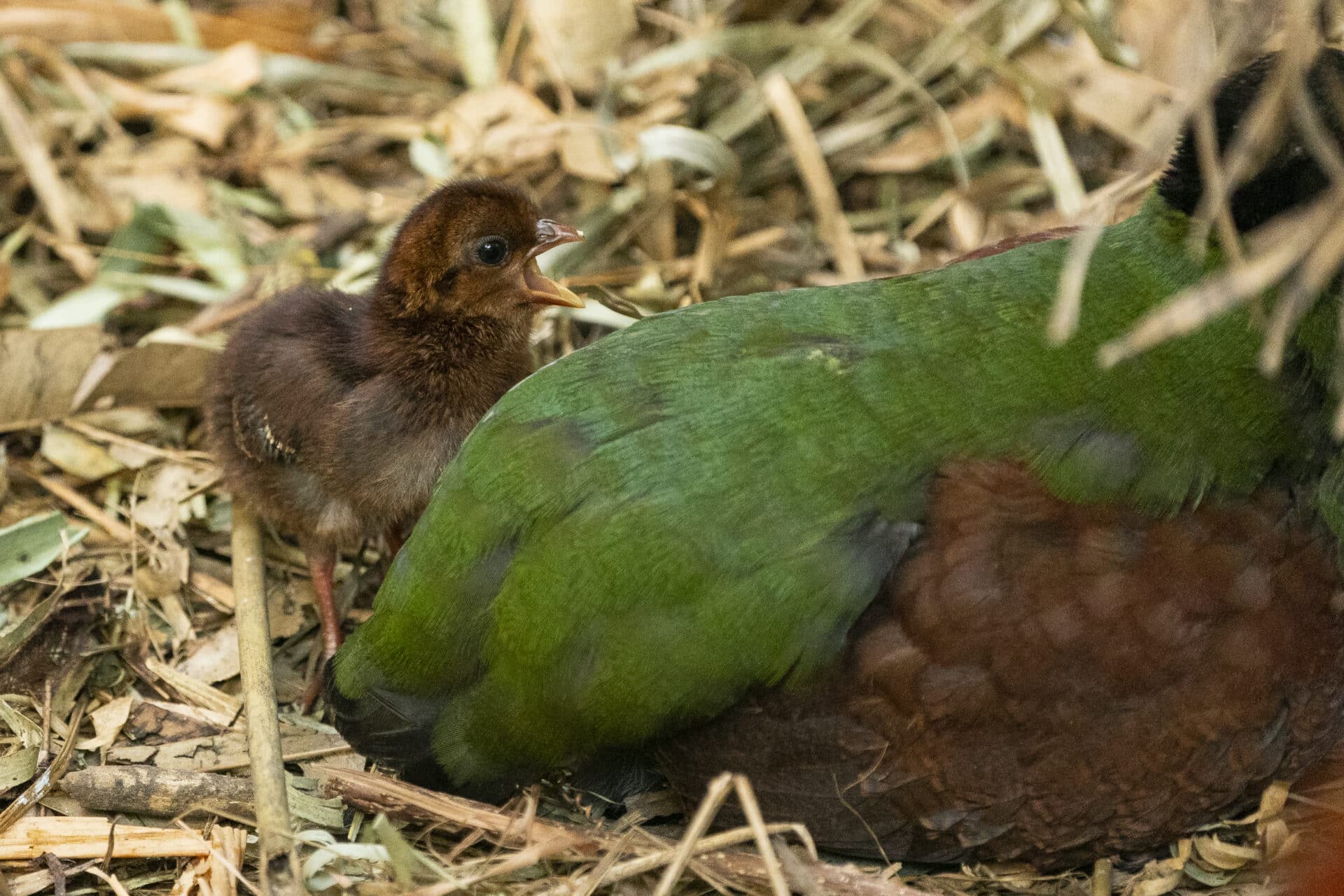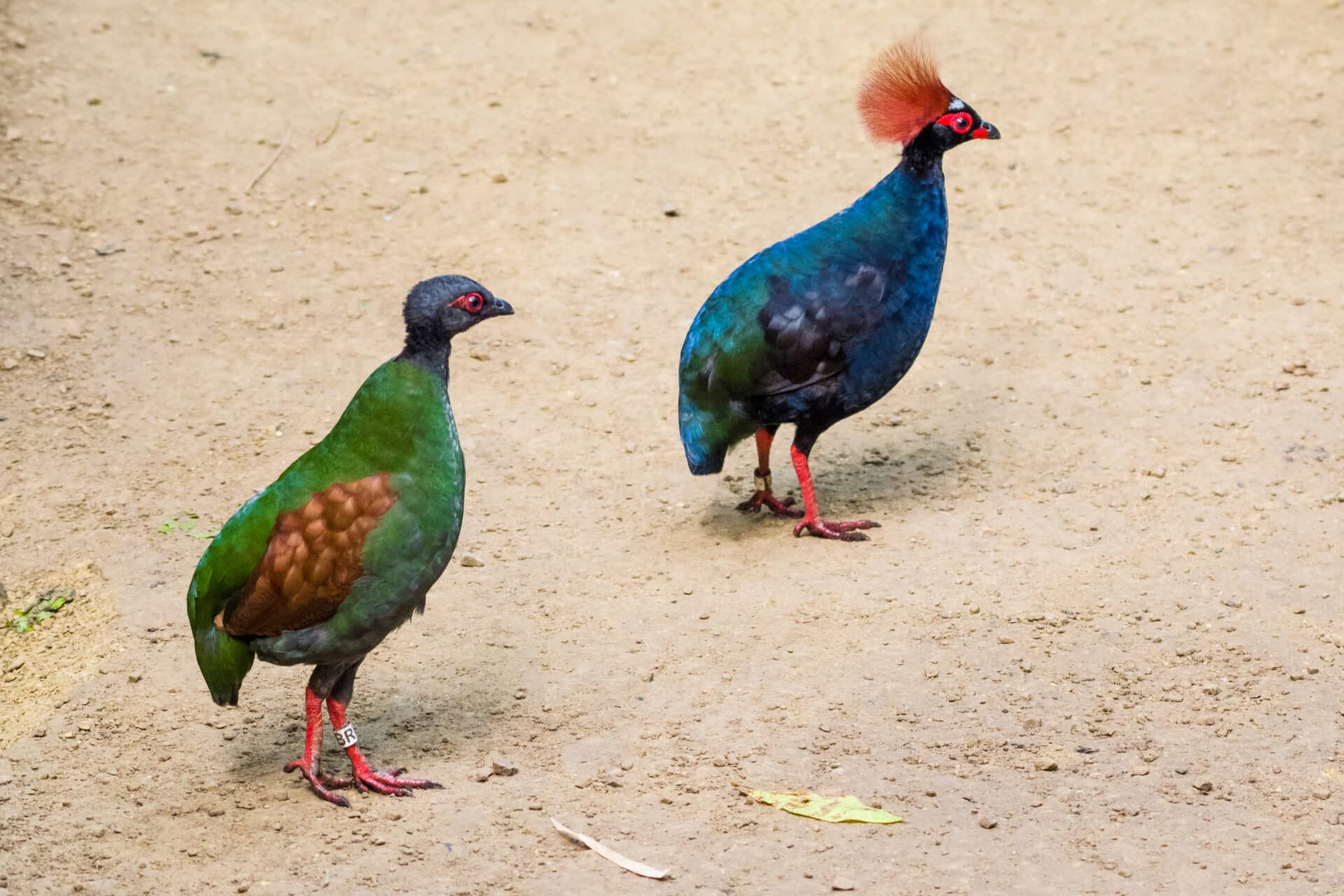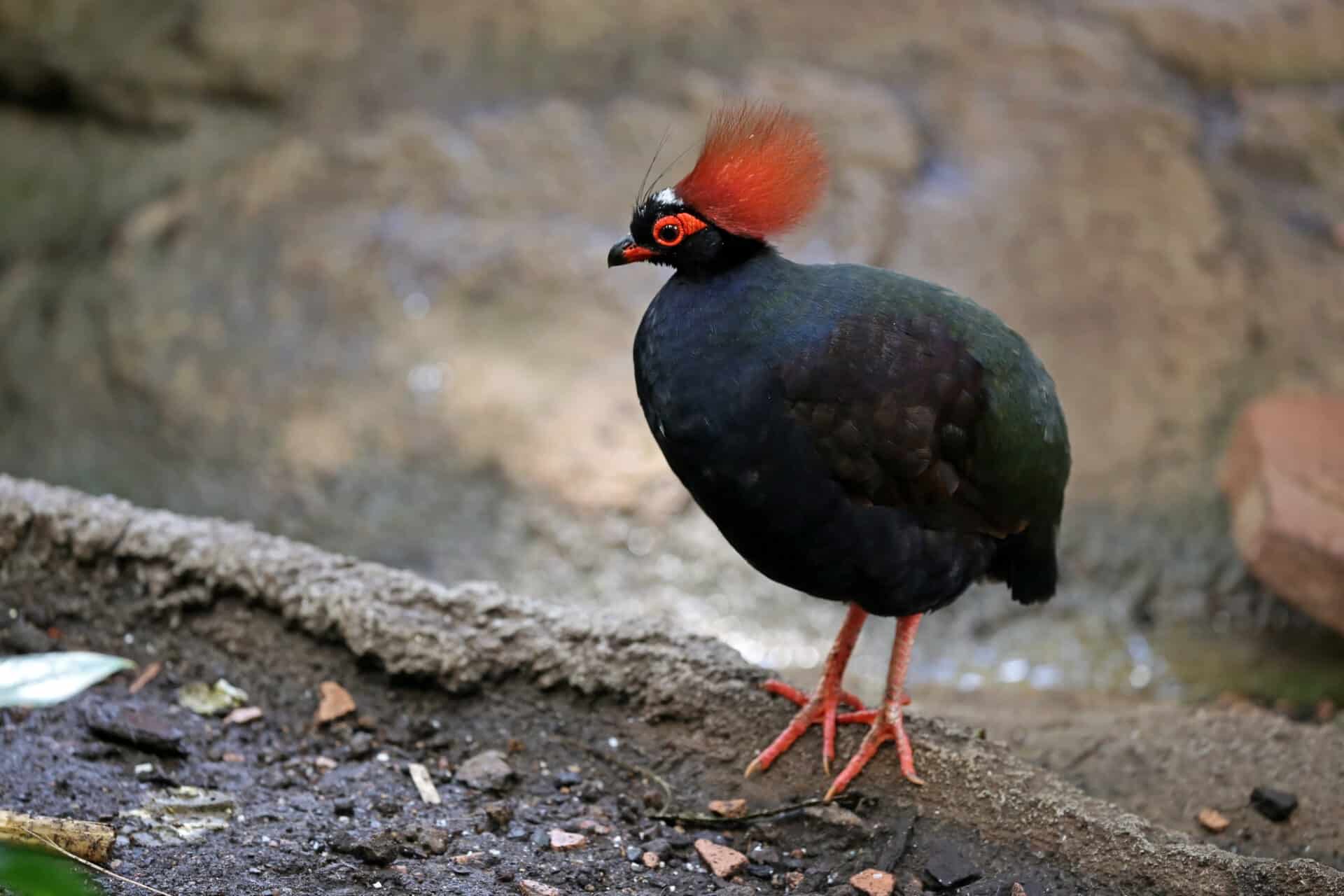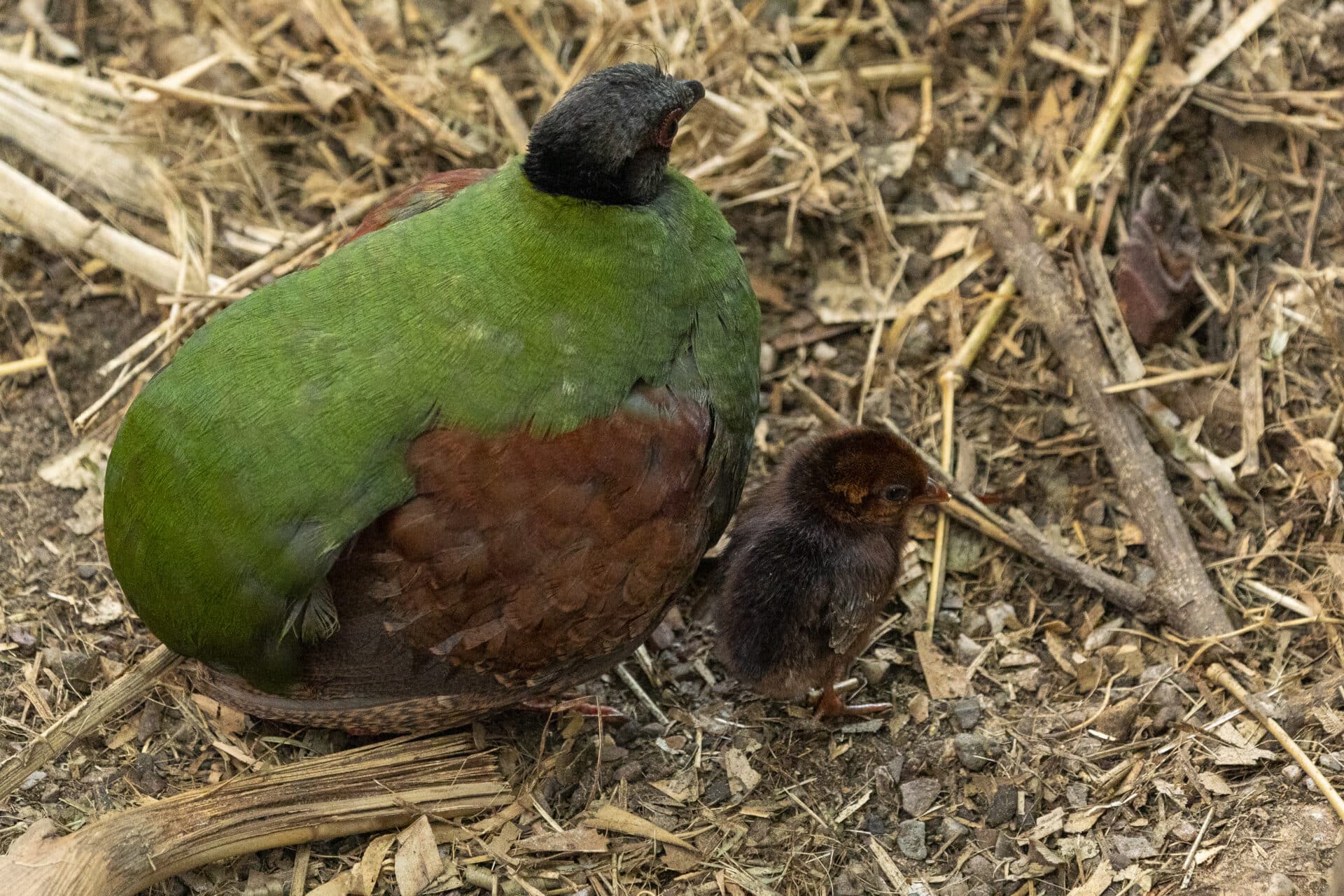Crested wood partridge
Common Name: Crested wood partridge
Scientific Name: Rollulus rouloul
Crested wood partridge are sexually dimorphic, which means that the male and the female look different. The male is easily identifiable by the red crest on his head which gives them their name. Females are slightly smaller, and generally more bright green in colour, with the male’s plumage ranging from a very dark blue to black. Both sexes have a black beak and a red ring around the eye.
A predominantly ground-based bird, crested wood partridge spend most of their time foraging on the forest floor. When escaping danger, they will often walk quickly, rather than fly, however at night they will roost in bushes or low tree branches.
It is thought that some populations may have formed relationships with wild pigs, following them around to gain access to churned-up areas of the forest floor to make it easier to forage.
Fast Facts
-
Status
Vulnerable
-
Size
around 26 cm in length
-
Weight
225 – 275 g females and up to 300 g males
-
Gestation
eggs are incubated for about 18 days
-
Young
5 - 6 eggs
-
Life span
15 – 20 years in captivity
In the wild
Crested wood partridge use their feet to scrape up dirt and leaf litter on the forest floor in search of fallen fruit (especially figs), seeds, and small invertebrates such as beetles, wood ants, worms, and snails.
Crested wood partridges are found in evergreen forests throughout southwest Thailand, Myanmar, Sumatra, and Borneo. Although they prefer dense lowland, bamboo, and hill forests, crested wood partridge have also been found at altitudes of above 1,300m across Malaysia.
Crested wood partridge pair for life. Both adults rake leaves to form an igloo-like structure on the forest floor, within which the female lays 4 to 6 eggs. In some cases, nests are a much less sophisticated, depression in the forest floor which the female will cover with leaves if she needs to leave for any length of time, as it is only the female bird who incubates the eggs. Chicks hatch after around 18 days and immediately imprint and follow the adults around the forest floor. The chicks are initially much darker than the adults with some striped markings which help camouflage them amongst the leaf litter. There is fierce competition between the chicks for food from which they learn quite quickly to forage for themselves. This can also mean that in larger clutches stronger chicks will drive smaller, weaker ones away.
Habitat destruction, logging and trapping are the primary threats to this species. However, they are also preyed upon by monitor lizards, civets, felids, such as clouded leopards, and large snakes. It has also been known for Hornbills to prey on crested wood partridge chicks.
While occurring in some protected areas, there are currently no species-specific conservation actions in place for the crested wood partridge. Some proposed actions are to expand the protected areas they inhabit, with increased monitoring, including assessing the impact of hunting and trapping.
